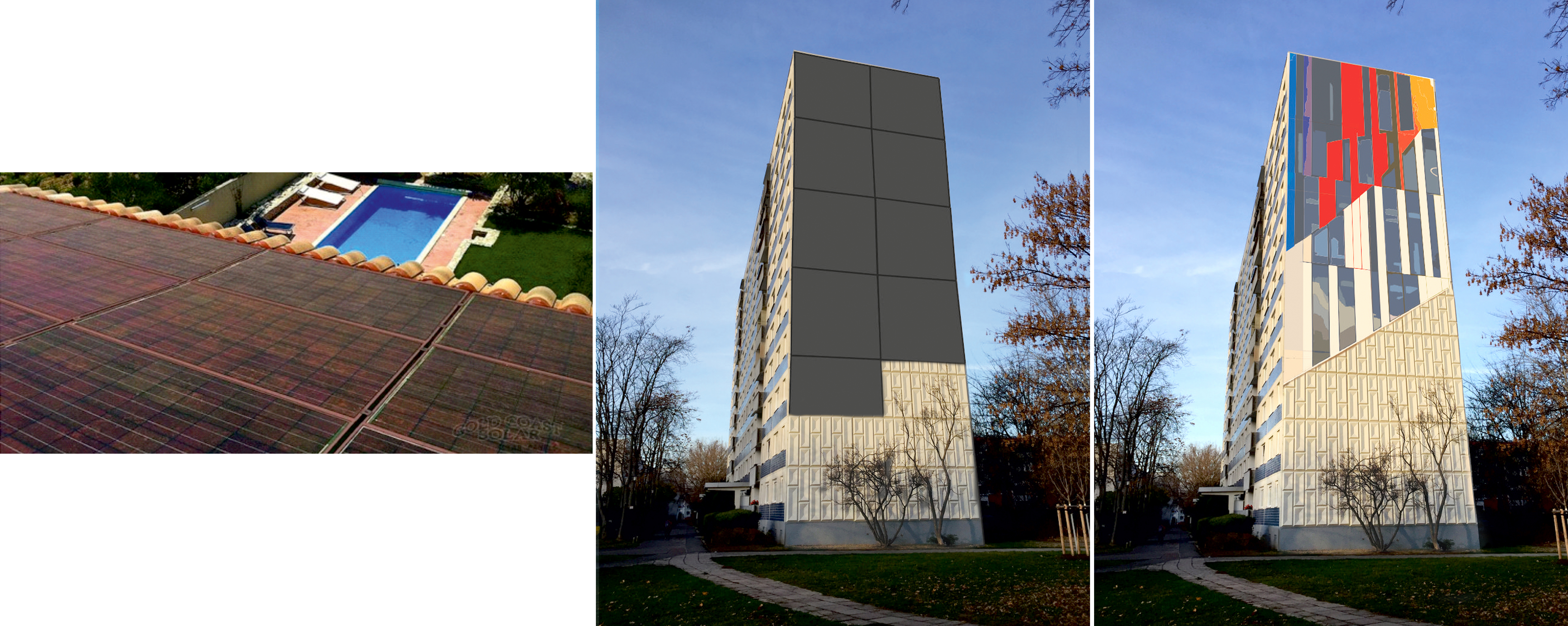

Photovoltaic modules have been making a significant contribution to improving the energy balance of buildings for years. Now that the acquisition costs of modules have fallen rapidly, new demands are being placed on the design and construction of solar modules. A joint project of the Fraunhofer Center for Silicon Photovoltaics CSP is pursuing new approaches. The project partners want to develop coloring concepts for facade solar modules with aesthetically sophisticated and individual design options as well as reduced color-related energy yield losses.
Placing solar modules on a flat roof has two decisive advantages: First, the solar radiation is highest there. Second, they do not interfere with the overall aesthetic impression of a building. If additional surfaces are to be used for generating solar power, such as pitched roofs or even facades, the demands on the design options increase. This raises the question of developing aesthetically pleasing and modifiable solar modules that allow a high degree of design freedom in terms of coloring and other design requirements, while at the same time minimizing color-related energy yield losses.
The joint project "Light management and manufacturing concepts for colored photovoltaic modules in building facades" (Color PV) by Fraunhofer CSP, Hohenstein Isolierglas GmbH and Kogu Print & Werbetechnik GmbH & Co. KG starts at this point. The aim is to flexibly display different single-color or multicolor designs on solar modules with a wide range of colors and rather high resolution, so that it is also possible to display photorealistic images. In contrast to most of the technologies investigated so far for coloring solar modules, which use spectrally selective coatings and thus only allow homogeneous, single-color surfaces with a very limited color selection, the project partners are focusing on digital printing processes and multicolor printing for a variety of color shades as well as individual, semi-transparent color prints (Kogu Print). The project also aims to demonstrate the potential of special interference-based inks with high light transmission for colored PV modules and to optimize various structuring and lamination processes. Structures in the laminates (HIG) are to be used for improved light guidance.
"With the development of a colored, digitally printed facade solar module front with high light transmission in the relevant spectral range, we are opening up new possibilities for facade design. Photovoltaic module manufacturers and their supplier companies can thus develop new product solutions that can be sold on the global market for building-integrated photovoltaics," says Charlotte Pfau, project manager at Fraunhofer CSP.
The special feature of the project, which will run until January 2022, is the mapping of a complete value chain: from film and glass processing to digital printing and solar module production.